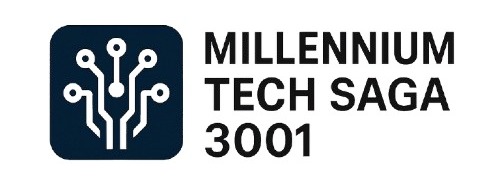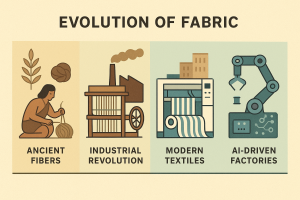Introduction: The Backbone of Our Digital Era
In today’s rapidly evolving technological landscape, semiconductors power everything from smartphones and computers to artificial intelligence systems and autonomous vehicles. Often referred to as the “brains” of modern devices, these tiny chips are at the heart of the artificial world we inhabit. The semiconductor ecosystem is a complex web of companies specializing in design, manufacturing, equipment, and materials. This article explores the key players, the evolution of process nodes from 90 nanometers (nm) down to 3 nm, advanced lithography technologies like Deep Ultraviolet (DUV) and Extreme Ultraviolet (EUV), and the geopolitical dynamics surrounding access to cutting-edge machinery. As of 2025, this industry is valued in the trillions, driven by AI demand and global competition.
Key Players in the Semiconductor Ecosystem
The semiconductor value chain is divided into several sectors: equipment manufacturers, foundries (pure-play manufacturers), integrated device manufacturers (IDMs) who design and fabricate their own chips, fabless designers, and others like memory specialists. Here’s an overview of major players:
Equipment Manufacturers
- ASML (Netherlands): The world’s leading supplier of photolithography systems, ASML dominates the market for advanced tools like EUV machines. These are essential for etching intricate patterns on silicon wafers. ASML’s technology enables the production of chips at 5 nm and below, and it collaborates with giants like TSMC and Synopsys for next-gen advancements.
Foundries and IDMs
- TSMC (Taiwan): As the largest pure-play foundry, TSMC holds over 60% of the global market share in 2024. It manufactures chips for clients like Apple, Nvidia, and AMD. In 2025, TSMC is ramping up 3 nm production (N3E variant) and plans mass production of 2 nm by late 2025.
- Samsung (South Korea): An IDM, Samsung produces its own chips (e.g., Exynos processors) and offers foundry services. It pioneered 3 nm with Gate-All-Around (GAA) transistors in 2022 and is advancing to 2 nm by 2025. Samsung also leads in memory chips.
- Intel (USA): As an IDM, Intel designs and manufactures its own processors. After delays, it’s catching up with its 18A process (equivalent to 1.8 nm) targeted for 2025, aiming to rival TSMC in performance. Intel’s foundry arm (IFS) is expanding to serve external clients.
- SMIC (China): China’s top foundry, SMIC has achieved 7 nm production using DUV technology despite U.S. export restrictions. In 2025, it’s pushing toward 5 nm but faces challenges without EUV access. SMIC serves domestic clients like Huawei.
Fabless Designers
- Nvidia (USA): Specializing in GPUs for AI and graphics, Nvidia relies on TSMC and Samsung for manufacturing. Its chips, like the Blackwell series, drive the AI boom and are produced at 4 nm/5 nm nodes.
- AMD (USA): A fabless company focusing on CPUs and GPUs, AMD uses TSMC for advanced nodes like 5 nm for its Ryzen and Epyc processors.
Other sectors include memory (e.g., Micron, SK Hynix), software tools (e.g., Synopsys), and materials suppliers. The ecosystem is interdependent, with TSMC’s dominance making Taiwan a geopolitical hotspot.
| Company | Type | Key Strengths | Market Share (2024 Est.) |
|---|---|---|---|
| TSMC | Foundry | Advanced nodes, high yield | 61.7% |
| Samsung | IDM/Foundry | Memory, GAA tech | 11% |
| Intel | IDM | Process innovation, U.S. base | ~5% (foundry growing) |
| SMIC | Foundry | Domestic China focus | ~5% |
| Nvidia | Fabless | AI GPUs | N/A (design only) |
| AMD | Fabless | CPUs/GPUs | N/A (design only) |
| ASML | Equipment | Lithography monopoly | Dominant in EUV |
Evolution of Semiconductor Process Nodes
Semiconductor process nodes refer to the size of transistors on a chip, with smaller nodes allowing more transistors per area, leading to faster, more efficient devices. The “nm” measurement historically denoted gate length but now serves as a marketing term for overall scaling. From 90 nm in the early 2000s to 3 nm in 2025, advancements have followed Moore’s Law, enabling AI and high-performance computing.
Here’s a timeline of key nodes, their introduction years, advanced functions, and examples:
| Node | Intro Year | Key Advancements & Functions | Examples |
|---|---|---|---|
| 90 nm | 2004 | Improved speed/power over 130 nm; enabled dual-core CPUs. Higher transistor density for better performance in PCs. | Intel Pentium 4, AMD Athlon 64 |
| 65 nm | 2006 | Reduced leakage, better energy efficiency; supported mobile devices. | Intel Core 2 Duo, Xbox 360 CPU |
| 45 nm | 2007 | High-k dielectrics for lower power; advanced graphics. | Intel Penryn, AMD Phenom |
| 32 nm | 2010 | Smaller size for multi-core; improved clock speeds. | Intel Westmere, AMD Bulldozer |
| 28 nm | 2011 | Planar to FinFET transition prep; cost-effective for mid-range. | Nvidia Kepler GPUs, Qualcomm Snapdragon |
| 22 nm | 2012 | First FinFET (3D transistors) for better control; power savings. | Intel Ivy Bridge |
| 14 nm | 2014 | FinFET maturity; higher density for servers/AI. | Intel Broadwell, Samsung Exynos |
| 10 nm | 2017 | Denser packing; AI acceleration in mobiles. | Intel Cannon Lake, TSMC for Apple A11 |
| 7 nm | 2018 | EUV introduction; massive transistor counts for ML training. | TSMC for AMD Zen 2, Huawei Kirin 990 |
| 5 nm | 2020 | Enhanced FinFET; up to 30% power reduction, AI edge computing. | TSMC for Apple M1, Samsung for Exynos 2100 |
| 3 nm | 2022-2023 | GAA/FinFET; 15-25% performance boost, ultra-low power for wearables/AI. | TSMC N3E, Samsung 3GAA for Bitcoin miners |
| 2 nm | 2025 (planned) | Backside power delivery; even higher efficiency for hyperscale AI. | TSMC N2, Samsung/Intel equivalents |
Smaller nodes bring challenges like quantum effects but enable functions like real-time AI processing and energy-efficient data centers.
Lithography Technologies: DUV and EUV Machines
Lithography is the process of patterning circuits onto wafers using light. Two main types dominate:
- DUV (Deep Ultraviolet): Uses 193 nm or 248 nm wavelengths from excimer lasers. It’s versatile for nodes down to 7 nm via multi-patterning (multiple exposures for finer details). DUV is cost-effective, produces more chips per time, and remains vital for legacy and mid-range production. However, it struggles with sub-7 nm due to diffraction limits.
- EUV (Extreme Ultraviolet): Employs 13.5 nm wavelengths from laser-pulsed tin plasma, allowing single-patterning for 7 nm and below. It achieves higher resolution for denser chips but is complex, expensive (machines cost $200M+), and power-hungry. EUV enables advanced functions like billions of transistors for AI models.
ASML holds a monopoly on EUV machines, with DUV as its second-tier offering.
Countries with Advanced Machines and Geopolitical Implications
EUV machines are primarily in:
- Taiwan (TSMC): Multiple facilities.
- South Korea (Samsung).
- USA (Intel, GlobalFoundries).
- Japan (limited, via partnerships like Rapidus).
- Netherlands (ASML’s own R&D).
China is restricted from EUV due to U.S.-led export controls, updated in 2024-2025, to prevent military advancements. This forces SMIC to use DUV for 7 nm+. China is developing domestic EUV alternatives, potentially by 2025-2026, but lags behind. DUV exports to China are also partially restricted, impacting ASML’s sales (expected 25-30% drop in China revenue for 2025).
Conclusion: Shaping the Future of AI and Beyond
The semiconductor ecosystem is a testament to human ingenuity, fueling the modern artificial world. With TSMC leading in advanced nodes and ASML enabling breakthroughs, the industry faces challenges from geopolitics and physics limits. As we approach 2 nm and beyond, innovations like GAA and backside power will drive AI’s next wave. For enthusiasts and investors, keeping an eye on U.S.-China tensions and node roadmaps is crucial. This ecosystem isn’t just about chips—it’s about powering tomorrow’s realities.







Be First to Comment